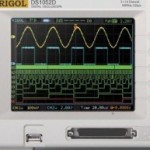- This topic has 19 replies, 11 voices, and was last updated 9 years, 4 months ago by
 Karan Ahuja.
Karan Ahuja.
-
AuthorPosts
-
-
April 17, 2016 at 6:31 am #37384
 Rajguru M. MohanParticipant
Rajguru M. MohanParticipantHi Everyone,
I want to know about Soliton Transmission in Fiber Optics in optical fiber communication.
What we exactly mean to Soliton Transmission.
How could i implement Soliton Transmission using optisystem.
Because it is future trends in OFC, so we needs to know about it.
As tThe application of solitons in communication systems opens the way to ultrahigh-speed information superhighways. Transmission speed of order of Tbit/s can be achieved if optical amplifiers are combined with WDM in soliton based communication systems.
The simulation results for Soliton order N=1 and N=3 are obtained using OptSim Software.
Could it possible to implement in optisystem software.Hope you will take interest in this topic.
-
April 17, 2016 at 10:13 am #37462
 prakash jatParticipant
prakash jatParticipanthi rajguru
see example in tutotrial -
April 17, 2016 at 10:41 am #37485
 syed fareedParticipant
syed fareedParticipantHi Rajguru M. Mohan
Please go through following links i think it may help u
http://www.ijareeie.com/upload/2014/february/7_Soliton.pdf
http://www.jpier.org/PIER/pier74/11.07050401.Gangwar.SS.pdf
https://dspace.vsb.cz/bitstream/handle/10084/83885/AEEE-2010-8-5-107-bohac.pdf?sequence=1with Regards
Syed-
April 17, 2016 at 2:37 pm #37557
 Domail SinghParticipant
Domail SinghParticipantHello Rajguru
first of all thanks to Syed for sharing these links. I would suggest you to go through the links. These may be of great help.Regards
Domail
-
-
April 17, 2016 at 1:38 pm #37530
Manoj Kumar
ParticipantHi Rajguru,
I also suggest you to have a look at the links provided by the Syed… They will surely be of help…
Regards
-
April 17, 2016 at 2:21 pm #37548
 Ankita SharmaParticipant
Ankita SharmaParticipantHi Rajguru,
I suggest you to go through the tutorials.. It will surely be of help..
Regards
Ankita -
April 17, 2016 at 3:19 pm #37582
deepak jha
ParticipantHi Rajguru,
I also believe there are certain examples in tutorials of this topic..
Regards
-
April 17, 2016 at 3:54 pm #37628
 Rajguru M. MohanParticipant
Rajguru M. MohanParticipantHi all,
Thank you all for sharing and posting your links and your comments.
It is really helpful and important information about soliton-transmission-in-fiber-optics.
As far I know about soliton transmission and its advantage as :
1. Because of the unique features of optical solitons, soliton transmission can help to solve other problems of data transmission, like polarization mode dispersion.
2. Also, when used with frequency guiding filters (sliding guiding filters in particular), the soliton systems provide continuous all-optical regeneration of the signal suppressing the detrimental effects of the noise
3. Reduces the penalties associated with wavelength-division multiplexed (WDM) transmission.
4. Because the soliton data looks essentially the same at different distances along the transmission, the soliton type of transmission is especially attractive for all-optical data networking.
5. Moreover, because of the high quality of the pulses and return-to-zero (RZ) nature of the data, the soliton data is suitable for all-optical processing.Please comment on above advantages of soliton transmission. are you agree with it not.
Thanks and regards,
Rajguru-
April 17, 2016 at 4:01 pm #37634
 Domail SinghParticipant
Domail SinghParticipantHello Rajguru
Thank you for sharing such valuable and important information regarding solitons. I hope it is helpful to all members
Regards
Domail
-
-
April 17, 2016 at 4:00 pm #37632
 Domail SinghParticipant
Domail SinghParticipantHi Yogita
As mentioned in other post that your replies are not visible so please avoid replying until you are permitted to. Thank youRegards
DOmail -
April 17, 2016 at 4:11 pm #37641
deepak jha
ParticipantHi Rajguru,
Thanks for the valuable information soliton-transmission-in-fiber-optics.. Highly appreciate your efforts..
Regards
-
April 17, 2016 at 4:13 pm #37643
deepak jha
ParticipantHi Domail,
Lets hope Yogita understands and stops commenting as of now..
Regards
-
April 17, 2016 at 4:32 pm #37650
 FAYIQA NAQSHBANDISpectator
FAYIQA NAQSHBANDISpectatorHI RAJGURU..
As far I know about soliton transmission and its an advantage because of the unique features of optical solitons, soliton transmission can help to solve other problems of data transmission, like polarization mode dispersion…Also, when used with frequency guiding filters (sliding guiding filters in particular), the soliton systems provide continuous all-optical regeneration of the signal suppressing the detrimental effects of the noise. I hope you find it helpful…Regards
FAYIQA -
April 17, 2016 at 5:36 pm #37687
Rahul Tiwari
ParticipantHi Rajguru,
I agree with fayiqa that soliton transmission can help to solve other problems of data transmissions like polarization mode dispersion…
Regards
Rahul Tewari -
April 17, 2016 at 5:56 pm #37703
 shafeen al yasinParticipant
shafeen al yasinParticipantHi Rajguru,
I completely agree with fayiqa. It should be helpful to you.Regards
Shafeen -
April 20, 2016 at 2:47 am #38372
 Rajguru M. MohanParticipant
Rajguru M. MohanParticipantHi Fayiqa,
You have talked about frequency guiding filters; I have read about it.
Yeah, it is one of useful components in case of Soliton system.
It adds various advatages as compared to simple filters like:
Coupling between amplitude and frequency fluctuations that is due to filter sliding,
enhances timing jitter in soliton transmission controlled by in-line filters.
It gradually translates the peak frequency of guiding filters along its length,
we create a fiber transmission line that is substantially opaque to noise while remaining transparent to solitons.
This allows the use of stronger filters, and hence greater jitter reduction,
without incurring the usual penalty of exponentially rising noise from the excess gain required to overcome filter loss.
The sliding-frequency guiding filter causes an improved form of soliton jitter control.
These filters can guide the soliton pulses to slightly different wavelengths continuously,
although they are made to be identical.These advatages all causes to use frequency guiding filters in solitons system.
Thanks
Rajguru-
June 25, 2016 at 7:59 pm #40791
 Karan AhujaSpectator
Karan AhujaSpectatorHi ranjeet.
As ranjeet has mentioned rightly that soliton based optical fiber communication systems are more suitable for long haul communication because of their very high information carrying capacity and repeater less transmission.Soliton pulses does not affected(by dispersion) after long distance communication. It is true that the fact that solitons are spatially localized and propagate with (little to) no deformation makes them the carriers of choice for modern optical communication, as they can be used to encode a bit in a small amount of space through the presence or absence of the pulse in a designated temporal window.
For dispersion compensation you can easily use fiber bragg grating. I will try to attach few links of some papers which have used fiber bragg grating for dispersion compensation.Thanks
-
June 25, 2016 at 8:00 pm #40792
 Karan AhujaSpectator
Karan AhujaSpectatorHere is the link of the optiwave sample for dispersion compensation using FBG
Compensation of Dispersion with Fiber Bragg Grating Component
It demonstrates the possibility for dispersion compensation with the help of fiber Bragg Grating created with the Fiber Grating component. This component allows design of apodized and chirped fiber gratings that are able to provide dispersion compensation in optical system.The physical idea behind this compensation is following: creating of an apodised linear chirped grating allows us to create a time delay between different spectral components of the signal.For example, in SMF at 1.55μm, group velocity dispersion creates a negative chirp of the pulses, which means that the higher frequencies (which propagate faster) are in the leading part of the pulse and the lower (propagating slower) in the trailing one because of this different velocity of propagation of different spectral components, the pulse spreads. If we create fiber grating with period linearly reducing along the grating, because the higher frequencies will reflect after longer propagation in the grating a time delay between lower and higher frequency components will appear which is just opposite to this created in the SMF. Therefore propagating and reflecting our pulse in this device will allow to compensate the dispersion broadening of our pulse.
You may refer to this link and it will surely be of some help.
Thanks -
June 25, 2016 at 8:01 pm #40793
 Karan AhujaSpectator
Karan AhujaSpectatorSoliton based optical fiber communication systems are more suitable for long haul communication because of their very high information carrying capacity and repeater less transmission.Soliton pulses does not affected(by dispersion) after long distance communication.
The fact that solitons are spatially localized and propagate with (little to) no deformation makes them the carriers of choice for modern optical communication, as they can be used to encode a bit in a small amount of space through the presence or absence of the pulse in a designated temporal window.We have a number of challenges still need to be overcome to arrive at spatially continuous, fine resolution, sensing and actuation, the time seems ripe for the investigation of advanced control techniques for active dispersion management related to Solitons.we could develop an L1 adaptive control scheme for the problem of active dispersion management for propagation of solitons along uncertain fibers.Here are links of some papers you may refer to:
http://www.photonics.com/Article.aspx?AID=19690
http://link.springer.com/article/10.1007/s10297-004-0026-9#/page-1
http://esatjournals.net/ijret/2014v03/i07/IJRET20140307086.pdf
http://www.optical-waveguides-modeling.net/Litchinitser/publ-files/JP1_JLT_1997_DC.pdf
http://www.ijarcce.com/upload/2015/october-15/IJARCCE%2047.pdf
http://citeseerx.ist.psu.edu/viewdoc/download?doi=10.1.1.512.5937&rep=rep1&type=pdfI hope this will be helpful to you.
Thanks
-
-
-
April 27, 2016 at 1:03 pm #38569
 Rajguru M. MohanParticipant
Rajguru M. MohanParticipantHi Ranjeet,
I agree to your points that “The application of solitons in communication
systems opens the way to ultrahigh-speed information superhighways”. Soliton based optical
communication systems can be used over distances of several thousands
of kilometers with huge information carrying capacity by using optical
amplifiers.
The existence of solitons in optical fibers is the result of a balance between the chirps induced by fiber dispersion characterized by GVD (GroupVelocity Dispersion) coefficient β2and fiber nonlinearity characterized by SPM (self-phase modulation) coefficient γ.
Analytically soliton is a solution of nonlinear Schrodinger equation describing pulse propagation in optical fiber. Soliton based optical fiber communication systems are more suitable for long haul communication because of their
very high information carrying capacity and repeater less transmission. Soliton pulses does not affected(by dispersion)
after long distance communication.
Soliton communication systems require an optical source capable of
producing chirp free pico-second pulses at a high repetition rate with
a shape closest to the “sech” shape. The source should operate in the
wavelength region near 1.55 µm.
Early experiments on soliton transmission used the technique of
gain switching for generating optical pulses of 20–30 ps duration by
biasing the laser below threshold and pumping it high above threshold
periodically.Thanks
-
-
AuthorPosts
- You must be logged in to reply to this topic.

